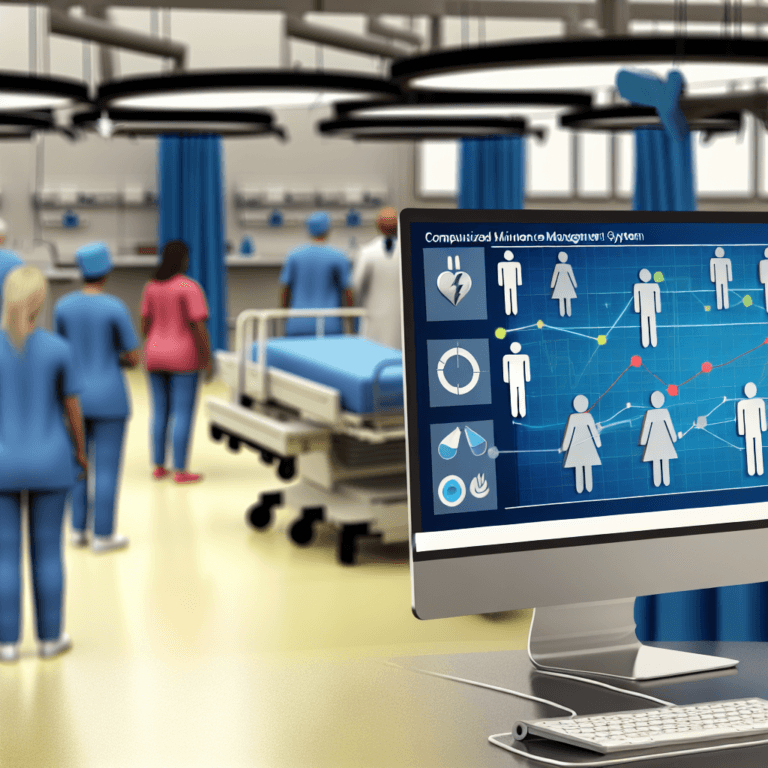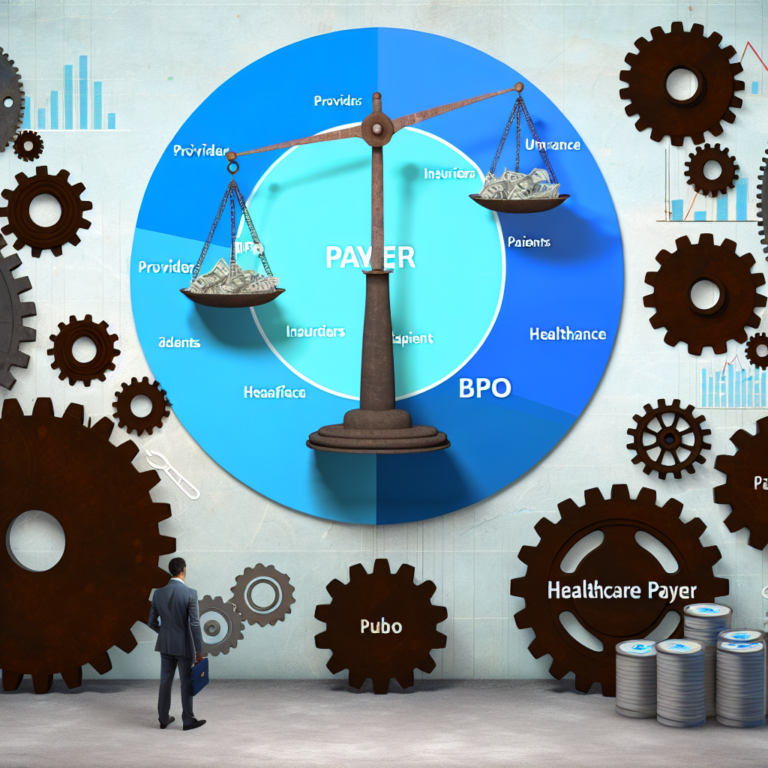“Revolutionize patient care with innovative healthcare services. Discover how cutting-edge technology and practices are improving the healthcare industry.”
Enhancing Patient Care Through Healthcare Services Innovation

Table of Contents
- Introduction
- The Impact of Telemedicine on Patient Care: Advancements and Challenges
- Utilizing Artificial Intelligence in Healthcare: Improving Efficiency and Quality of Care
- Innovative Approaches to Chronic Disease Management: Empowering Patients and Providers
- Revolutionizing Healthcare Delivery: The Rise of Virtual Care and Remote Monitoring
- Q&A
- Conclusion
“Revolutionizing healthcare, one innovation at a time.”
Introduction
Enhancing patient care is a top priority for healthcare providers around the world. With advancements in technology and a growing focus on patient-centered care, healthcare services innovation has become a crucial aspect of improving patient outcomes. Through the development and implementation of new and improved healthcare services, providers are able to enhance the quality, accessibility, and efficiency of care for their patients. This not only leads to better health outcomes, but also improves the overall patient experience. In this modern era of healthcare, innovation is key to delivering the best possible care to patients and continuously improving the healthcare system as a whole.
The Impact of Telemedicine on Patient Care: Advancements and Challenges
In recent years, the healthcare industry has seen a significant shift towards innovation and technology. One of the most notable advancements in this field is the emergence of telemedicine, which has revolutionized the way patient care is delivered. Telemedicine, also known as telehealth, is the use of telecommunication and information technology to provide clinical healthcare services to patients remotely. This technology has not only improved access to healthcare but has also enhanced the quality of patient care. However, with any new technology, there are also challenges that need to be addressed to fully realize its potential in enhancing patient care.
One of the most significant impacts of telemedicine on patient care is the increased access to healthcare services. In rural and remote areas, where access to healthcare facilities is limited, telemedicine has bridged the gap by providing virtual consultations with healthcare professionals. This has not only improved the health outcomes of patients in these areas but has also reduced the burden on urban healthcare facilities. Moreover, telemedicine has also made healthcare services more accessible to individuals with mobility issues or those who are unable to leave their homes due to chronic illnesses.
Another advantage of telemedicine is the improved efficiency and convenience for both patients and healthcare providers. With telemedicine, patients can schedule appointments and receive consultations from the comfort of their homes, eliminating the need to travel and wait in long queues at healthcare facilities. This has not only saved patients time and money but has also reduced the risk of exposure to infectious diseases. For healthcare providers, telemedicine has streamlined the process of patient care, allowing them to see more patients in a day and reducing the administrative burden of managing appointments and paperwork.
In addition to improving access and efficiency, telemedicine has also enhanced the quality of patient care. With the use of advanced technology, healthcare providers can now remotely monitor patients’ vital signs, such as blood pressure and heart rate, and make timely interventions if necessary. This has been particularly beneficial for patients with chronic conditions who require regular monitoring. Moreover, telemedicine has also enabled healthcare providers to collaborate and consult with specialists from different locations, leading to better diagnosis and treatment plans for patients.
Despite the numerous benefits of telemedicine, there are also challenges that need to be addressed to fully realize its potential in enhancing patient care. One of the main challenges is the lack of infrastructure and resources in some areas, particularly in developing countries. Without a reliable internet connection and access to necessary equipment, telemedicine services cannot be effectively implemented. This highlights the need for investment in infrastructure and resources to ensure equal access to telemedicine services for all patients.
Another challenge is the issue of reimbursement for telemedicine services. In many countries, telemedicine is not covered by insurance, making it inaccessible for patients who cannot afford to pay out of pocket. This not only limits the reach of telemedicine but also creates a financial burden for patients who require regular consultations. To overcome this challenge, policymakers need to work towards including telemedicine in insurance coverage and developing reimbursement policies that are fair for both patients and healthcare providers.
In conclusion, telemedicine has had a significant impact on patient care, improving access, efficiency, and quality of healthcare services. However, to fully realize its potential, challenges such as infrastructure and reimbursement need to be addressed. With continued advancements and investments in telemedicine, we can enhance patient care and make healthcare services more accessible and convenient for all.
Utilizing Artificial Intelligence in Healthcare: Improving Efficiency and Quality of Care

In recent years, the healthcare industry has seen a significant increase in the use of technology to improve patient care. One of the most promising advancements in this field is the utilization of artificial intelligence (AI). AI has the potential to revolutionize healthcare services by enhancing efficiency and quality of care. In this article, we will explore how AI is being used in healthcare and the impact it has on patient care.
AI refers to the simulation of human intelligence processes by machines, especially computer systems. It involves the development of algorithms that can perform tasks that typically require human intelligence, such as problem-solving, decision-making, and language translation. In healthcare, AI is being used to analyze vast amounts of data, identify patterns, and make predictions, ultimately improving patient outcomes.
One of the most significant benefits of AI in healthcare is its ability to improve efficiency. With the increasing demand for healthcare services, there is a growing need for more efficient processes. AI can help streamline administrative tasks, such as scheduling appointments and managing patient records. This frees up time for healthcare professionals to focus on providing quality care to patients.
Moreover, AI can assist in diagnosing and treating patients. By analyzing patient data, AI algorithms can identify potential health issues and provide recommendations for treatment. This can help healthcare professionals make more accurate diagnoses and develop personalized treatment plans for patients. Additionally, AI can assist in monitoring patients’ progress and adjusting treatment plans accordingly, leading to better outcomes.
Another significant advantage of AI in healthcare is its potential to improve the quality of care. With the help of AI, healthcare professionals can access a vast amount of data and information about a patient’s medical history, symptoms, and test results. This can aid in making more informed decisions about patient care. AI can also assist in identifying potential risks and complications, allowing for early intervention and prevention of adverse outcomes.
Furthermore, AI can help reduce medical errors. According to a study by Johns Hopkins, medical errors are the third leading cause of death in the United States. AI can help minimize these errors by providing real-time alerts and reminders to healthcare professionals. For example, AI can flag potential drug interactions or alert healthcare professionals to a patient’s allergies, reducing the risk of medication errors.
In addition to improving efficiency and quality of care, AI can also enhance patient engagement. With the use of chatbots and virtual assistants, patients can access healthcare services and information at any time. This can be especially beneficial for patients with chronic conditions who require frequent monitoring and support. AI-powered virtual assistants can also provide patients with personalized health advice and reminders, promoting self-care and disease management.
However, as with any new technology, there are also challenges and concerns surrounding the use of AI in healthcare. One of the main concerns is the potential for AI to replace human healthcare professionals. While AI can assist in many tasks, it cannot replace the empathy and critical thinking skills of healthcare professionals. Therefore, it is crucial to strike a balance between the use of AI and human involvement in patient care.
In conclusion, the use of AI in healthcare has the potential to enhance patient care by improving efficiency, quality, and engagement. It can assist in diagnosing and treating patients, reducing medical errors, and promoting patient self-care. However, it is essential to carefully consider the ethical implications and ensure that AI is used in a way that complements and supports the work of healthcare professionals. With continued advancements and proper implementation, AI can play a significant role in enhancing patient care and revolutionizing the healthcare industry.
Innovative Approaches to Chronic Disease Management: Empowering Patients and Providers
Innovative approaches to chronic disease management have become increasingly important in the healthcare industry. With the rise of chronic diseases such as diabetes, heart disease, and cancer, it has become crucial for healthcare providers to find new and effective ways to manage these conditions. This is where healthcare services innovation comes into play.
Healthcare services innovation refers to the development and implementation of new ideas, methods, and technologies to improve the delivery of healthcare services. It involves a continuous process of identifying problems, finding solutions, and implementing them to enhance patient care. In the context of chronic disease management, healthcare services innovation focuses on empowering both patients and providers to better manage these conditions.
One of the key ways in which healthcare services innovation is enhancing patient care is through the use of technology. With the advent of digital health tools, patients now have access to a wide range of resources to help them manage their chronic conditions. For example, there are now mobile apps that allow patients to track their symptoms, monitor their medication intake, and communicate with their healthcare providers. These tools not only empower patients to take control of their health but also provide valuable data to healthcare providers, allowing them to make more informed decisions about patient care.
Another innovative approach to chronic disease management is the use of telemedicine. This involves the use of technology to provide remote healthcare services, such as virtual consultations and remote monitoring. For patients with chronic conditions, this means they can receive regular check-ups and consultations without having to leave their homes. This not only improves convenience for patients but also reduces the burden on healthcare facilities, allowing them to focus on more critical cases.
In addition to empowering patients, healthcare services innovation also aims to empower healthcare providers. One way this is being achieved is through the use of electronic health records (EHRs). EHRs allow healthcare providers to access a patient’s medical history, test results, and treatment plans in one centralized location. This not only saves time but also improves the accuracy and efficiency of patient care. With the use of EHRs, healthcare providers can also collaborate and share information with other providers, leading to better coordination of care for patients with chronic conditions.
Furthermore, healthcare services innovation is also improving patient care through the implementation of population health management strategies. This involves analyzing data from a group of patients to identify trends and patterns, which can then be used to develop targeted interventions and preventive measures. For example, by analyzing data from patients with diabetes, healthcare providers can identify common risk factors and develop strategies to prevent the development of the disease in at-risk individuals. This not only improves patient outcomes but also reduces healthcare costs in the long run.
Innovative approaches to chronic disease management are also empowering patients to take an active role in their own care. Patient education and self-management programs are being developed to provide patients with the knowledge and skills to manage their conditions effectively. These programs cover topics such as healthy lifestyle choices, medication management, and symptom recognition. By educating patients, healthcare providers are not only improving patient outcomes but also reducing the need for frequent hospital visits and readmissions.
In conclusion, healthcare services innovation is playing a crucial role in enhancing patient care in the management of chronic diseases. Through the use of technology, telemedicine, EHRs, population health management, and patient education, both patients and healthcare providers are being empowered to better manage chronic conditions. As the healthcare industry continues to evolve, it is essential to embrace innovative approaches to ensure the best possible outcomes for patients with chronic diseases.
Revolutionizing Healthcare Delivery: The Rise of Virtual Care and Remote Monitoring
In recent years, the healthcare industry has seen a significant shift towards innovation and technology. With the rise of virtual care and remote monitoring, healthcare services are being revolutionized, ultimately enhancing patient care. These advancements have not only improved access to healthcare but have also increased efficiency and reduced costs for both patients and providers.
Virtual care, also known as telehealth or telemedicine, refers to the use of technology to provide healthcare services remotely. This can include video consultations, remote monitoring, and digital communication between patients and healthcare providers. With the increasing use of smartphones and other digital devices, virtual care has become more accessible and convenient for patients.
One of the main benefits of virtual care is improved access to healthcare, especially for those living in rural or remote areas. Patients no longer have to travel long distances to see a specialist or wait for an appointment. With virtual care, they can connect with their healthcare provider from the comfort of their own home. This is particularly beneficial for patients with chronic conditions who require frequent check-ups and monitoring.
Moreover, virtual care has also proven to be a cost-effective solution for both patients and healthcare providers. By eliminating the need for in-person visits, patients can save on transportation costs and reduce the time taken off work. On the other hand, healthcare providers can save on overhead costs associated with maintaining a physical facility. This cost-effectiveness has made virtual care an attractive option for many healthcare organizations.
Another aspect of healthcare services innovation is remote monitoring. This involves the use of technology to track and monitor a patient’s health remotely. This can include wearable devices, such as fitness trackers or smartwatches, that collect and transmit data to healthcare providers. This data can then be used to monitor a patient’s vital signs, medication adherence, and overall health status.
Remote monitoring has proven to be particularly beneficial for patients with chronic conditions, such as diabetes, heart disease, and hypertension. By continuously monitoring their health, healthcare providers can detect any changes or warning signs early on and intervene before a serious health issue arises. This not only improves patient outcomes but also reduces the need for hospital readmissions, ultimately reducing healthcare costs.
Moreover, remote monitoring also allows for more personalized and proactive care. With the use of data and analytics, healthcare providers can identify patterns and trends in a patient’s health and make necessary adjustments to their treatment plan. This personalized approach to healthcare can lead to better outcomes and a higher quality of life for patients.
However, with the rise of virtual care and remote monitoring, concerns have been raised about the potential loss of the human touch in healthcare. Many argue that the physical presence of a healthcare provider is crucial for building trust and establishing a strong patient-provider relationship. While this is a valid concern, virtual care and remote monitoring should not be seen as a replacement for in-person care, but rather as a complementary tool.
In conclusion, the rise of virtual care and remote monitoring is revolutionizing healthcare delivery and enhancing patient care. These advancements have improved access to healthcare, reduced costs, and allowed for more personalized and proactive care. However, it is important to strike a balance between technology and the human touch in healthcare to ensure the best possible outcomes for patients. As technology continues to advance, it is essential for healthcare organizations to embrace innovation and use it to enhance patient care.
Q&A
1. What is healthcare services innovation?
Healthcare services innovation refers to the development and implementation of new and improved methods, processes, and technologies in the healthcare industry to enhance patient care and improve overall healthcare outcomes.
2. How does healthcare services innovation benefit patients?
Healthcare services innovation benefits patients by providing them with more efficient and effective healthcare services, improved access to care, and better treatment options. It also helps to reduce healthcare costs and improve patient satisfaction.
3. What are some examples of healthcare services innovation?
Some examples of healthcare services innovation include telemedicine, electronic health records, mobile health applications, and personalized medicine. Other examples include the use of artificial intelligence and machine learning in healthcare, as well as the development of new medical devices and treatments.
4. How can healthcare services innovation be encouraged and supported?
Healthcare services innovation can be encouraged and supported through investments in research and development, collaboration between healthcare providers and technology companies, and government policies that promote innovation in the healthcare industry. Additionally, healthcare organizations can foster a culture of innovation by encouraging and supporting their employees to think creatively and implement new ideas.
Conclusion
In conclusion, healthcare services innovation has the potential to greatly enhance patient care. By utilizing new technologies, processes, and approaches, healthcare providers can improve the efficiency, effectiveness, and overall quality of care for their patients. This can lead to better health outcomes, increased patient satisfaction, and reduced healthcare costs. It is important for healthcare organizations to continuously strive for innovation and improvement in order to provide the best possible care for their patients. With the ever-evolving landscape of healthcare, embracing innovation is crucial for the advancement of patient care.








